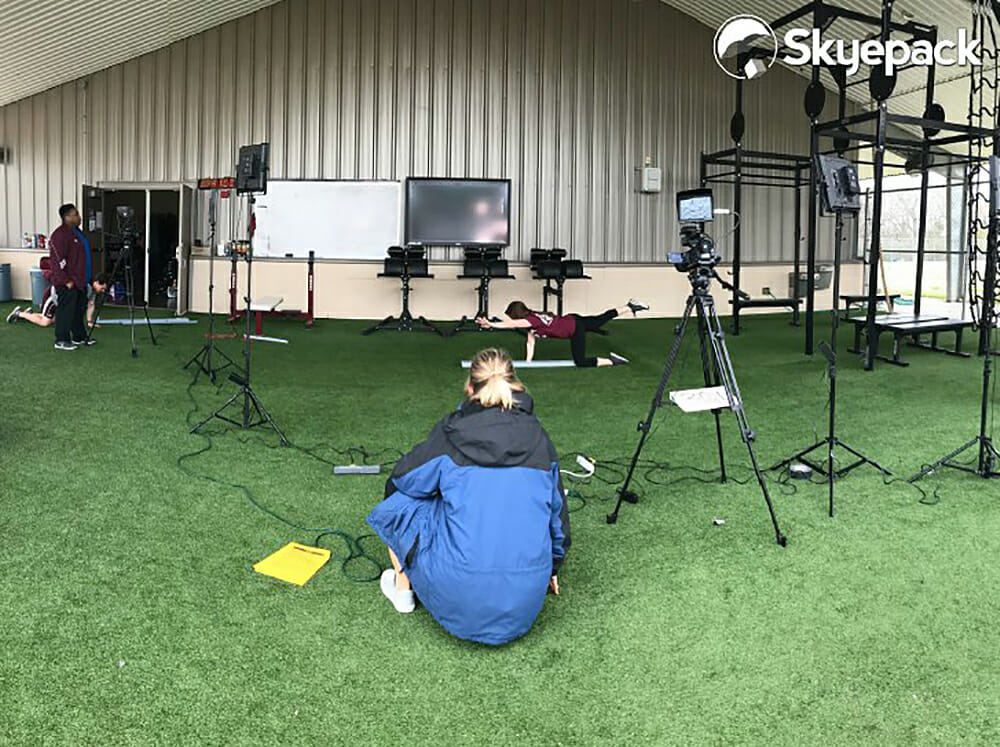
Articles
Editor’s Picks
Skyepack Harnesses Open Educational Resources to Offer College Course Material to Students for Just $35
By Henry Kronk
March 14, 2018
While traditional textbook publishers have been hiking their costs in recent years, a Purdue-affiliated company is changing that story. Skyepack works with professors to curate their educational material for their course. With the help of open educational resources, they aim to provide it to students for just $35.
It used to be that, when a professor put together the material they will cover in a given course, they had to tango with the publishing industry. They could either assign textbooks, anthologies, or other works outright. Or they could put together a coursepack of material using licensed segments of copyrighted materials for which their students would be charged accordingly. (Or they could use some combination of the two.) But picking and choosing your educational material takes a lot of work and time that could be otherwise spent conducting research. It’s much easier for a professor to simply pick a textbook and go from there.
The main problem with textbooks from the publishing industry is they’re expensive. A recent report from Student PIRGs found that, in the past decade, textbook costs have risen four times the rate of inflation. It’s not uncommon for a professor to ask students to pay hundreds of dollars for the educational material.
“Primarily we are focused on providing students with affordable course content,” said Skyepack CEO Brady Kalb. “We have a team of instructional designers. When we start working with a faculty, we’ll pair with someone on the instructional design team. The instructional designer’s job is to first understand the learning objectives of that course, the topics that are being taught, the teaching methodologies and pedagogies that the instructor is using, their assessment strategies, and the specific needs of the student population.”
“We then go out and curate content that meets all of those different objectives from various sources. All of that content is then delivered to students on our web and mobile platform. Our target cost for students is around $35 dollars. There are a lot of variables that go into determining what that price is exactly, but that’s where we want to see things end up. The intent is to take a course that has a high-priced $150 to $200 textbook and work with the professor to offer that content at a more reasonable price.”
How Does that Work with Any Bottom Line?
Skyepack draws their material from four different sources: materials created by the professor themselves, open educational resources, materials created by the Skyepack team, and some licensed copyrighted material.
“Every course is unique,” Kalb said. “We have courses that are all across the spectrum. A good example would be half the content is open source, 25% is content the instructor has already created or wants to create, and 25% is what we create.”
“We also have a content creation team—copyeditors, writers, videographers. We have a green screen studio to produce video, a sound studio to produce audio. So we can create a lot of really good, interactive, and engaging custom content.”

“We have courses that are 100% created by us, and 100% created by the instructor and they’ve chosen to work with us instead of a larger publisher. And the reason for that mainly is affordability. We’re not going to charge the same as what a traditional publisher would. The price is going to be much more fair. And we also don’t take ownership for the instructor’s copyright of that content.”
Skyepack Doesn’t Want Your Copyright
For many professors, the putting their course material online is complicated by the fact that many online providers will seek to claim some portion of their copyright.
“Most faculty don’t write books,” Kalb said. “But all faculty to some extent create content. Maybe PowerPoint slides or pdf files. The ones that do write books or portions of books, we’ve some that have published before with traditional publishers and their book has been taken out of print. Because they signed away their copyright, they can’t even access their own educational materials. We’re all about facilitating learning and giving access to students in a fair way. We’re not interested in copyrights.”
The Pros and Cons of Open Educational Resources
With the advent of the internet, open educational resources (OER) have become widely available. These freely licensed educational materials can be used at no cost, but tracking them down and modifying them for a course takes even more time and effort.
“The open source marketplace, if you will, is very fragmented. And a lot of content falls into one of two camps. Camp number one being content that was created by an instructor for their class at their specific university for the specific needs of their student population. That is difficult for a faculty member to pick up and adopt. They’re going to have different teaching methodologies, their students will have different needs. They’re going to give different weight to the various topics included in the course. So it won’t be a 1:1 conversion.”
“The second camp is content created with a very general focus. Trying to be all things to all people. And that makes it difficult for faculty to adopt as well. They would then have to go through that content and pick out the pieces that are relevant to their course. That’s where, when we’re using open content, we can add a lot of value because our instructional designers are trained to do that work. They’re trained to match content to specific learning objectives, the topics of interest, and the assessment strategies that professor is using.”
Skyepack has recently received over $800,000 million in incentives and tax credits from the state of Indiana and other organizations. They currently work with instructors in over 60 campuses around the U.S.









[…] April 15, the online learning platform Coursera debuted a new machine learning tool called CourseMatch. It automatically pairs university […]
[…] April 15, the online learning platform Coursera debuted a new machine learning tool called CourseMatch. It automatically pairs university […]
[…] Coursera Launches “AI for Everyone” (2018) […]